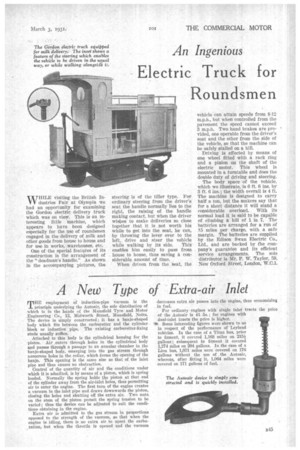A New Type of Extra-air Inlet
Page 63

If you've noticed an error in this article please click here to report it so we can fix it.
T" employment of induction-pipe vacuum is the principle underlying the Autoair, the sole distribution of which is in the hands of the Mansfield Tyre and Motor Engineering 'Co., 12, Mid-worth Street, Mansfield, Notts. The device is simply constructed; it has a banjo-shaped body which fits between the carburetter and the cylinder block or induction pipe. The existing carburetter-fixing studs usually suffice.
Attached to this body is the cylindrical housing for the piston. Air enters through holes in the cylindrical body and passes through a passsge to an annular chamber in the banjo-shaped body, emerging into the gas stream through numerous holes in the collar, which forms the opening of the banjo. This opening is the same size as that of the inlet pipe and thus causes no obstruction.
Control of the quantity of air and the conditions under which it is admitted, is by means of a piston, which is spring loaded. Normally the spring holds the piston at that end of the cylinder away from the air-inlet holes, thus permitting air to enter the engine. The first turn of the engine creates a vacuum in the inlet pipe and draws downwards the piston, closing the holes and skating off the extra air. Two nuts on the stem of the piston permit the spring tension to he varied; thus the device can be adjusted to suit the conditions obtaining in the engine.
Extra air is admitted to the gas stream in proportions opposed to the strength of the vacuum, so that when the engine is idling, there is no extra air to upset the carburation, but when the throttle is opened and the vacuum decreases extra air passes into the engine, thus economizing in fuel.
For ordinary engines with single inlet tracts the price of the Autoair is it 5s. ; for engines with dual-inlet tracts the price is higher.
lb Some interesting figures were shown to us in respect of the performance of Leyland vehicles. In the case of a Titan bus, prior to fitment, it covered 1,168 miles on 215i gallons ; subsequent to fitment it covered 1,274 miles on 204 gallons. In the case of a Lion bus, 1,031 miles were covered on 176 gallons without the use of the Autoair, whereas, after fitting it, 1,064 miles were covered on 171 gallons of fuel.




































































































